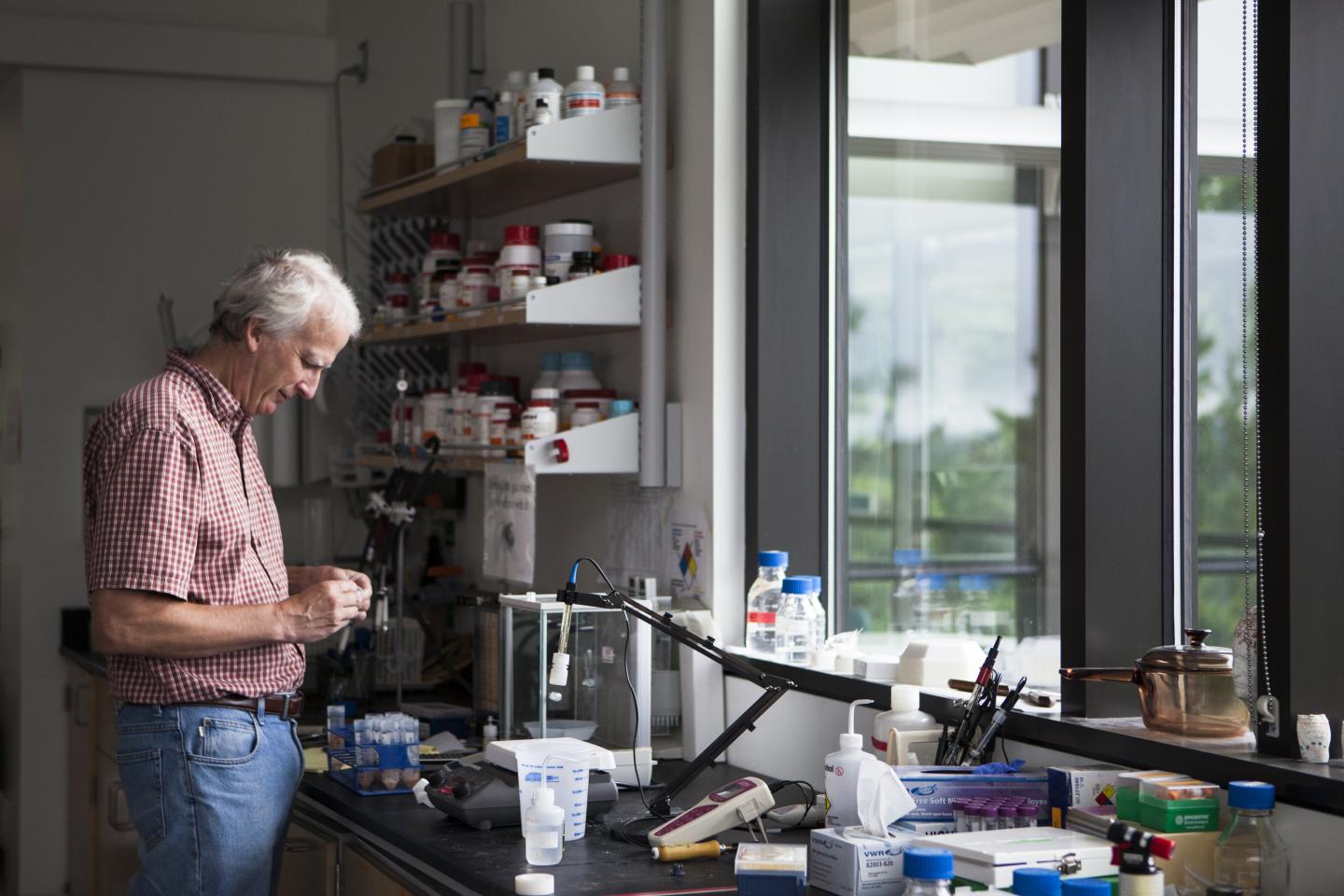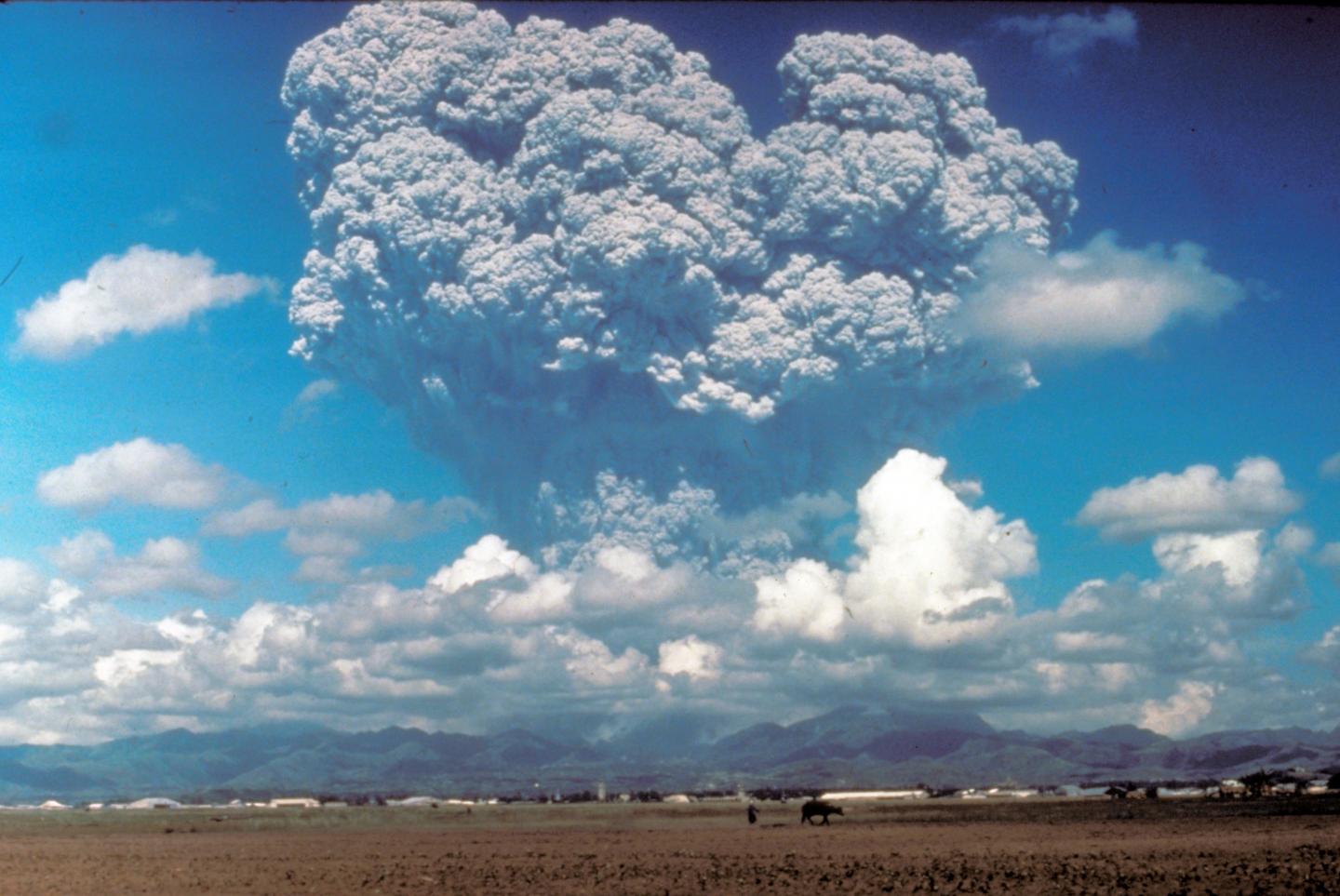Limiting greenhouse gas emissions is one way to fight climate change – but there are more radical approaches, too, as Jasmin Fox-Skelly reports.
Scientists agree we must limit warming of the planet to 1.5°C above pre-industrial levels to avoid the worst impacts of climate change. But so far, the world isn’t making good progress, and some argue more serious interventions may be necessary. According to a 2018 report from the Intergovernmental Panel on Climate Change (IPCC) the only way of reaching net zero emissions by the middle of the century will also require removing carbon dioxide from the atmosphere [1].
The world’s first large-scale combined direct air capture (DAC) and storage plant is located near Reykjavik, Iceland. Operated by Swiss-based start-up Climeworks, the plant captures 500t/year of CO2 from the air. A separate Icelandic company called Carbfix then combines the CO2 with water and pumps it underground, where it interacts with reactive rock formations to form stable minerals, providing a permanent carbon sink (C&I, Issue 10, 2022; Capturing CO2). However, sceptics argue that DAC is unlikely to remove enough CO2 from the atmosphere to make a difference. It is also extremely expensive due to the cost of pumping very large volumes of air through a CO2 capture device.
Sucking CO2 from the atmosphere is just one way of ‘geoengineering’ the Earth’s climate system to cool the planet. Other options include getting oceans to absorb more CO2 by encouraging the growth of phytoplankton – microscopic plant-like organisms that use sunlight to photosynthesise. For instance, David Emerson, a scientist at Bigelow Laboratory for Ocean Sciences in Maine, US, suggests using aircraft to sprinkle iron-rich deposits into oceans to feed phytoplankton [2]. A 2022 study, meanwhile, found that scattering engineered nanoparticles (ENPs) of iron, silicon dioxide (SiO2) and aluminium oxide (Al2O3) in the oceans could encourage phytoplankton growth, even at low concentrations unlikely to be toxic to marine life [3].

David Emerson at work in his laboratory at Bigelow Laboratory for Ocean Sciences. Credit: Greta Rybus
Sir David King, the Chair of Cambridge University’s Centre for Climate Repair, believes we could encourage phytoplankton blooms by floating a kind of fake whale faeces in the deep oceans. The project, entitled Marine Biomass Regeneration, involves attaching natural material – such as volcanic dust containing nutrients such as nitrates, phosphates, silicates and iron – onto rice husks, using lignin as a kind of glue. The nutrients would then float on the oceans for months, serving as a vital food source for phytoplankton.
‘We don’t see it as geoengineering, this is about replacing something natural that has been lost,’ says King. ‘We have removed baleen whales from the oceans – we hunted them for their blubber. As their population was very significantly reduced, their poo was lost, which was a vital food for phytoplankton. So, the idea is that if we can replace these missing nutrients, we could restock the oceans with biomass – with fish, crustaceans and mammals.’
As well as repopulating the oceans, King says the idea could result in the oceans capturing 1-15bn t/year of greenhouse gases. Phytoplankton themselves absorb CO2, but when they die and decompose some of this is released back into the atmosphere. However, if the oceans could be repopulated with whales, then more could be captured. ‘When the whales die, they drop to ocean floor 3-4km down and are fully sequestered – that carbon doesn’t rise back to the surface,’ says King.
‘We don’t see it as geoengineering, this is about replacing something natural that has been lost.’
Sir David King
Determined to use natural ingredients, the team obtained and analysed volcanic dust from regions including Tonga and Vanuatu. The Tongan dust is a good match, containing most of the missing nutrients from whale poo, and a global consortium of scientists are now testing the idea, floating the nutrients in the deep oceans of the world.
‘We have already done a study, which is shortly to be published, that shows that when Tonga’s Hunga Tonga-Hunga Ha’apai volcano erupted, the nutrient-rich volcanic dust created layers of phytoplankton in the surrounding oceans, stretching even to Australia,’ says King. ‘So we are pretty confident our idea will work, but we want to check not only that we get phytoplankton, but that we also get the fish that depend on the phytoplankton. And of course, we also want to make sure there are no negative impacts.’
Cooling the planet
Perhaps the most controversial method of geoengineering is reflecting sunlight back into space, otherwise known as Solar Radiation Modification (SRM). This could be achieved by painting structures with reflective paints, planting crops with high reflectivity, or even placing reflectors or shields in space. However, the most discussed methods involve injecting aerosols into the atmosphere.
‘Aerosols are little particles in the air, and they have a huge effect on clouds and how much light they reflect,’ says Sarah Doherty, atmospheric scientist at the University of Washington in Seattle, US.
Their effect depends on the type and size of the aerosol, and where exactly they are applied. For example, spraying sulphur dioxide or calcium carbonate aerosols in the lower stratosphere – known as stratospheric aerosol injection – would mimic the cooling effect of volcanic eruptions. Once released, SO2 reacts with water vapour to form droplets that become suspended in the air. These droplets act as tiny mirrors, reflecting incoming sunlight back to space.
‘We saw this effect most recently in 1991 when Mount Pinatubo in the Philippines erupted,’ says Doherty. ‘The volcanic eruption pushed a lot of sulphate into the stratosphere, which cooled the climate for a little under half a degree Celsius for a couple of years.’

The 1991 eruption of Mount Pinatubo in the Philippines cooled the climate by almost half a degree Celsius. Credit: Rutgers University-New Brunswick
Meanwhile, Doherty is looking at ways natural sea salt aerosols could be added to tropospheric clouds over the oceans to make them more reflective. Known as Marine Cloud Brightening, it works by changing the optical properties of the clouds. ‘Clouds form when the temperature drops and water vapour in the atmosphere condenses to form water droplets or ice crystals. However, water can’t condense on itself – it needs a particle, like an aerosol to condense on,’ says Doherty. ‘If you only have a small number of aerosol particles in the air, you will end up producing a small number of large droplets. However, if you add more particles to the cloud, you get a large number of very small droplets. As cloud reflectivity is partly determined by the surface area of water, it means that aerosols basically increase the mirror surface area of the cloud.’
While some aerosols are natural and originate from sea spray, mineral dust, and volcanic eruptions, aerosols are also produced by the combustion of fossil fuels, wood, and biomass. Unlike CO2 emissions, these aerosols are actually cooling the planet. ‘Particulate pollution in the atmosphere is already increasing cloud reflectivity in a way that we estimate to be offsetting about a quarter of greenhouse gas warming,’ says Doherty. ‘We’re reducing that particulate pollution at the same time greenhouse gases are going up, so that’s going to unmask a bunch of warming.’
Doherty’s research aims to find out whether we could replace this cooling from pollution using natural sea salt aerosols instead. This includes careful modelling of all the complex reactions taking place in the clouds under different conditions. ‘With stratospheric aerosol injection we’re very confident it would work. If you add particles to the stratosphere, they will reflect more sunlight and we could get significant cooling,’ says Doherty. ‘However, with marine cloud brightening, clouds are much more complex. If you do it wrong – if you add particles of the wrong size, wrong place or wrong concentrations – you could actually have the opposite of the intended effect. You could make the clouds go away.’
For ethical reasons and due to public backlash, there has been little testing of any solar radiation modification technologies. In 2021, researchers from Harvard University, US, planned to carry out The Stratospheric Controlled Perturbation Experiment (SCoPEx), whereby a balloon would release 0.5kg of sulphate into the stratosphere. The experiment planned to release just 0.3% of the sulphate emitted by a commercial transatlantic flight. But it never happened. However, modelling studies have shown that the technique would likely cool the planet. For example, a study in 2020 found that injecting the right amount of sulphur dioxide into Earth’s upper atmosphere could reduce the effects of climate change overall [4].
At the same time, the technology could have unintended consequences. For example, in 2013, researchers found that releasing stratospheric aerosols might reduce rain and snowfall – threatening crop production [5]. There is also a risk stratospheric aerosols would deplete the ozone layer. Meanwhile, in 2023, a study by Haruki Hirasawa at the University of Victoria, Canada, found that while adding seawater to clouds would be an effective way of cooling the planet, it could also increase the risk of East Antarctic glacier collapse, and cause a shift in the West African monsoon [6]. It’s clear that the impacts of such technology are far from certain, and a 2023 UNESCO report highlights a number of ethical considerations to be considered before any climate-altering technologies are deployed [7].
Firstly, the risks of these technologies are unknown, and therefore need to be assessed urgently. Secondly, climate engineering could undermine existing efforts to reach net zero; why try to reduce carbon emissions if the problem can be fixed by spraying aerosols into space? Thirdly, the companies developing geoengineering technology could rush to deploy it before the ethical frameworks to govern it are in place – similar to how AI has been introduced. Finally, the impacts of climate technologies will likely be felt unequally by people around the globe. Rich Western countries could use SRM to cool cities in the northern hemisphere, only for countries in the southern hemisphere to suffer the costs. For example, some scientists have proposed injecting aerosols at high northern latitudes to slow rapid Arctic warming. However, a 2022 study suggests this could inadvertently shift India’s monsoon southward, reducing the country’s summer rainfall by up to 29% and threatening crops [8].
Meanwhile, in 2021 scientists modelled the impact of injecting aerosols over the Indian Ocean to increase rainfall in the semiarid Sahel region of North Africa, which frequently suffers droughts. O2 . However, the intervention just shifted the droughts to a different set of nations in East Africa [9]. There’s also a risk that stratospheric aerosol injection could shift incidences of malaria from highland areas in East Africa, where the mosquito currently thrives, to lowland areas in South Asia and sub-Saharan Africa [10]. These regions would cool down just enough to make them ideal homes for the mosquitos that carry malaria.
‘Climate engineering carries inherent risks foreseen to be unequally distributed across the planet,’ says Gabriela Ramos, Assistant-Director General for Social and Human Sciences, at UNESCO. ‘Marginalised communities, already on the frontline of climate disruption, will likely face a higher impact.’
However, scientists also believe that the risks of doing nothing also need to be considered. ’The reality at this point is it’s extremely unlikely we’re going to avoid 1.5 degrees of warming, or even 2 degrees of warming,’ says Doherty. ‘People in the future, say 20-30 years from now, may well be in a situation where the climate impacts are so significant that it’s extremely likely they will consider using geoengineering. That’s why the research needs to happen now.’
Sir David King agrees. ‘There are a significant number of people who are saying that geoengineering experiments should be terminated, but I believe the experiments are critical,’ he says. ‘We all hope we won’t need to deploy some of these technologies – it has to be a last resort. But that last resort might come about by just one country trying it, and that should never be done without a considerably greater scientific effort than has been done so far.’
References
- Rogelj, J.D., et al. Global Warming of 1.5°C. An IPCC Special Report, Chapter 2
- Emerson, D. Frontiers in Marine Science, doi: 10.3389/fmars.2019.00022
- Babakhani, P., et al. Nature Nanotechnology, doi: 10.1038/s41565-022-01226-w
- Irvine, P.J., Keith, D.W. Environmental Research Letters, doi:10.1088/1748-9326/ab76de
- Tilmes, S., et al. JGR Atmospheres, doi: 10.1002/jgrd.50868
- Hirasawa, H., et al. Geophysical Research Letters, doi: 10.1029/2023GL104314
- Report of the UNESCO World Commission on the Ethics of Science and Technology on the Ethics of Climate Engineering. Published online November 28, 2023.
- Krishnamohan, K.S., Bala, G. Climate Dynamics, doi: 10.1007/s00382-021-06121-z
- Ricke, K., et al. Annual Review of Earth and Planetary Sciences, doi: 10.1146/annurev-earth-031920-083456
- Carlson, C.J., et al. Nature Communications, doi: 10.1038/s41467-022-29613-w





